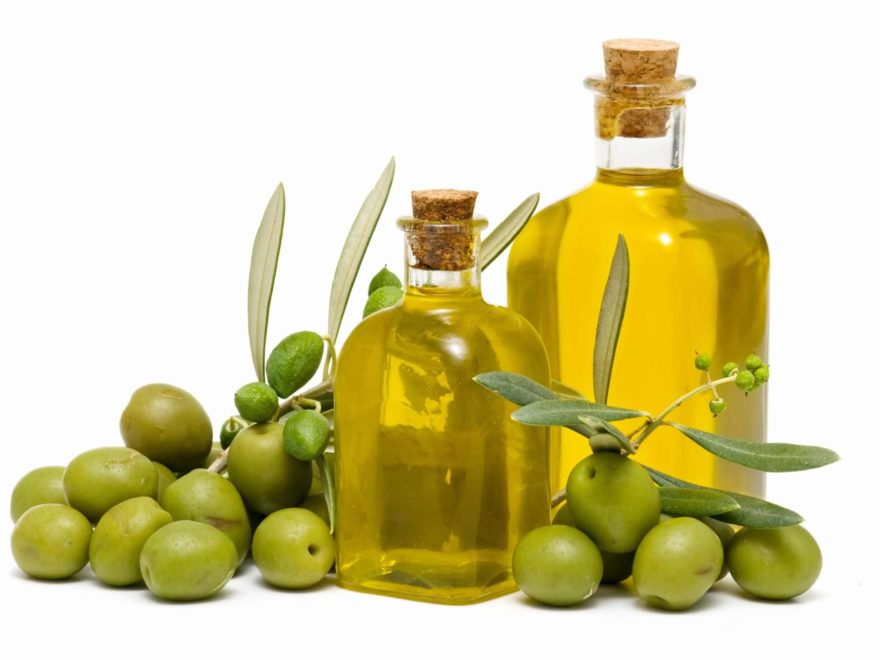One walk down the oil aisle of your local grocery store and you might be surprised at just how many different types of olive oil there are. They come in such an array of colors, from pale golden to deep, dark, viscous green. You wouldn’t be remiss to think that surely these oils must be made from different olives, but not so! Though different olives are used to make olive oil, this is not what causes the unique characteristics of each preparation. Rather, it is how the oils are made and processed that makes them different from one another.
So what exactly are these differences and how do they affect you, as you shop for and cook with one of the most versatile ingredients around? You’re about to find out! Join us as we navigate the sea of olive oils, finding out all of the similarities and differences between two of the most commonly used oils: extra virgin olive oil vs. olive oil.
What is Olive Oil?
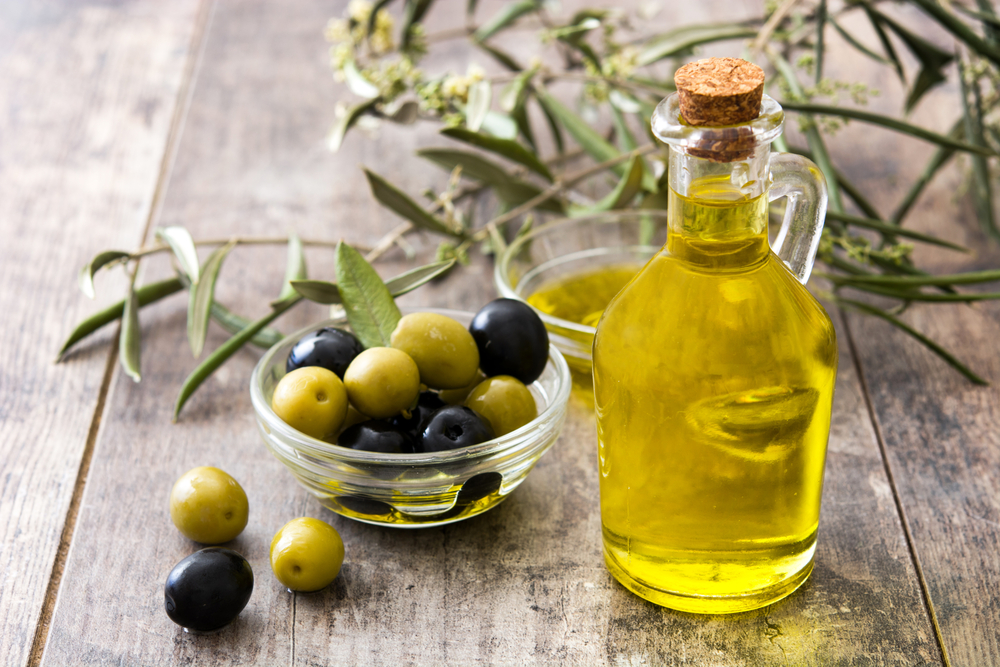
Sometimes included in the larger category of vegetable oils, olive oil is actually the extracted fat of the fruit of the olive plant, Olea europaea. As a key component of Mediterranean cuisine (find out more about the Mediterranean Diet here!), this golden liquid has been produced and utilized for thousands of years, with evidence suggesting that olive oil was made as early as 8,000 years ago.
It’s therefore no surprise that the regions most famous for olive oil use and production are those which circle the Mediterranean Basin, such as Greece, Italy, Spain, and Turkey. Now, many years into the future, other regions have a foot in the door of the olive oil race as well, with countries such as Australia and the United States growing and producing quality olives and oils of their own.
Olive oil may be produced and processed differently in a wide range of factors, but your basic olive oil–which many olive oil brands package as regular olive oil, pure olive oil, or sometimes even light olive oil–is considered to be the most versatile as well as the most ubiquitous option.
What is Extra Virgin Olive Oil?
Extra virgin olive oil, fondly known as EVOO, is one such version of olive oil, which has some unique manufacturing characteristics that result in some very specific (and highly sought after!) taste, appearance, and nutritional attributes.
As an unrefined oil–don’t worry, we’ll explain what the heck that means below!–extra virgin olive oil maintains a distinct flavor profile which is easy to distinguish from other types of olive oils. The main thing to keep in mind is that extra virgin olive oil is the least processed version of olive oil.
Comparing Olive Oil and Extra Virgin Olive Oil
Now that we have an understanding of the basics of these two types of olive oil, let’s get into the nitty gritty differences between the two. We’ll start at the beginning, with the types of olives used all the way through to nutritional characteristics of each!
Type of Olives Used
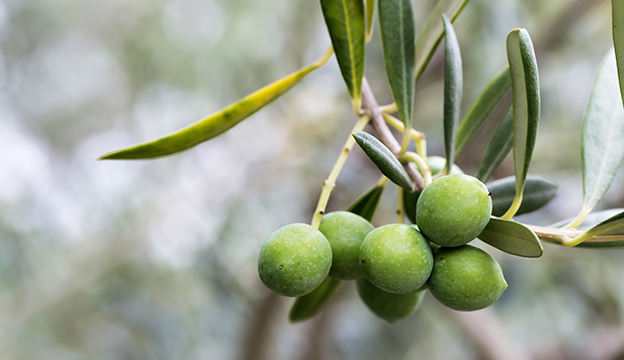
It may surprise you that both olive oil and extra virgin olive oil, as well as other iterations of olive oil, are all made from the same olives! While there are many cultivars of olives that are widely used for oil making, this is not what makes for the differences between olive oil and extra virgin olive oil. Rather, these distinguishing characteristics are caused by differences in the processing of the oil itself.
Is olive oil always made from ripe olives? Not necessarily! The point at which the olives are harvested is up to the individual growers themselves, as some oil manufacturers prefer the strong peppery flavor of oil produced by unripe green olives, while others prefer to press oil from ripe olives–which have turned purple or black–resulting in a more mild and fruity flavor.
Pressing
Once the olives are harvested at their desired point of ripeness, it’s time to make the oil! Before making either type of olive oil, the olives must be thoroughly ground up so that the oils can be released during the extraction process. When pressing olives, heat is helpful for extracting even more oil so sometimes heat is applied to aid in the extraction of regular olive oil.
Here’s where the two paths diverge however. If heat is used in the extraction process, the oil can no longer be considered extra virgin olive oil, as production standards mandate that it be made by way of cold extraction. For this reason, many manufacturers opt to use resulting oil from the first pressing of the olives to make EVOO, and then use heat to extract the remaining oil during a second pressing.
Refining
After the oil is extracted, it goes through a further refining process. In most cases, the oil, whether regular or extra virgin, is filtered to remove any visible particulates and sediment. Some producers, however, prefer to leave their product unfiltered, citing that doing so provides additional health benefits. The downside unfortunately is that unfiltered oil has a shorter shelf life than filtered as the bits and pieces of fruit within the oil will continue to ferment and spoil more quickly than a clean, filtered product.
At this point, the extra virgin olive oil is complete as it is simply olive oil which has been cold pressed and filtered! Regular olive oil, on the other hand, is a more refined oil, therefore it is taken through additional steps which serve to remove impurities. Oil refiners may use heat, chemicals, or both to accomplish this. In most cases, a bit of EVOO is added back to the refined olive oil for taste and quality improvement purposes.
Appearance
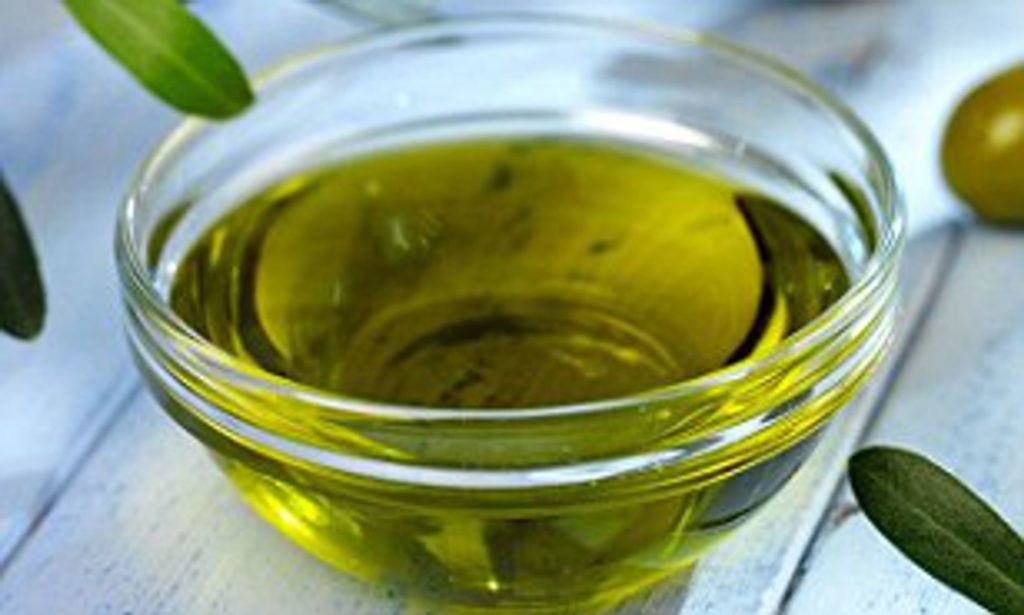
So how do these differences in pressing and refining affect the appearance of the olive oil? As it is the most refined of the two, regular olive oil has a lighter color and is typically pale yellow, with an appearance similar to that of other processed oils like vegetable oil or canola oil. Extra virgin oil on the other hand, retains a much darker color due to being the result of the first pressing. EVOO may range anywhere from a brassy dark yellow all the way to a deep green coloring.
Another difference we discussed is filtered vs. unfiltered. As you might expect, filtered olive oil, whether regular or extra virgin, will be nice and crystal clear, while unfiltered olive oil will have a somewhat cloudy appearance.
Taste & Flavor
Whether regular or extra virgin, you can always expect olive oil to be surprisingly bitter! This is because in stark contrast to those salted or brined olives we’re accustomed to snacking on, olives in their natural state are bitter and thus their oils are as well. Also, depending on the fruit used and region it hails from, the oil may taste a bit fruity, herbal, or even slightly spicy!
The best way to describe the difference in taste and flavor between olive oil and extra virgin olive oil specifically is that regular olive oil has a much lighter taste and more neutral flavor as compared to extra virgin olive oil. Since the EVOO is a result of the first pressing, the majority of the distinct flavor components go into this batch of oil and while there is still plenty of oil left for a second pressing, it’s not quite as flavorful.
In addition, since the regular olive oil is further refined than extra virgin oil, this ends up contributing towards a lighter body and more neutral taste of the oil as well.
Uses
Now that we know all about the key differences between extra virgin olive oil vs. olive oil, it all comes down to one–and arguably the most important–distinction: how do you use these two oils?
The biggest factor that sets these two apart in terms of culinary application is the smoke point, meaning the temperature at which the oil starts to burn.
Most folks have experienced the way that a pat of butter tossed into a hot pan will quickly start to brown and burn. Believe it or not, this same thing can happen to cooking oil as well. While butter is at risk of burning because of those sensitive milk solids, olive oil is sensitive to heat when there are a greater number of plant solids present. Since regular olive oil is more refined, it has very few of these solids, while EVOO owes its delicious flavor directly to the high level of these microscopic bits.
Therefore, regular olive oil has a higher smoke point while extra virgin olive oil has a lower smoke point. This means that while extra virgin olive oil is delicious and great tasting for use in making salad dressing, drizzling over finished dishes, or even gently roasting vegetables, its smoke point is too low to produce the best flavor results when roasting foods at a high heat or doing any hard searing. For searing, roasting, grilling, and frying, the best olive oil to use is regular olive oil or another neutral oil such as vegetable oil or coconut oil.
Cost
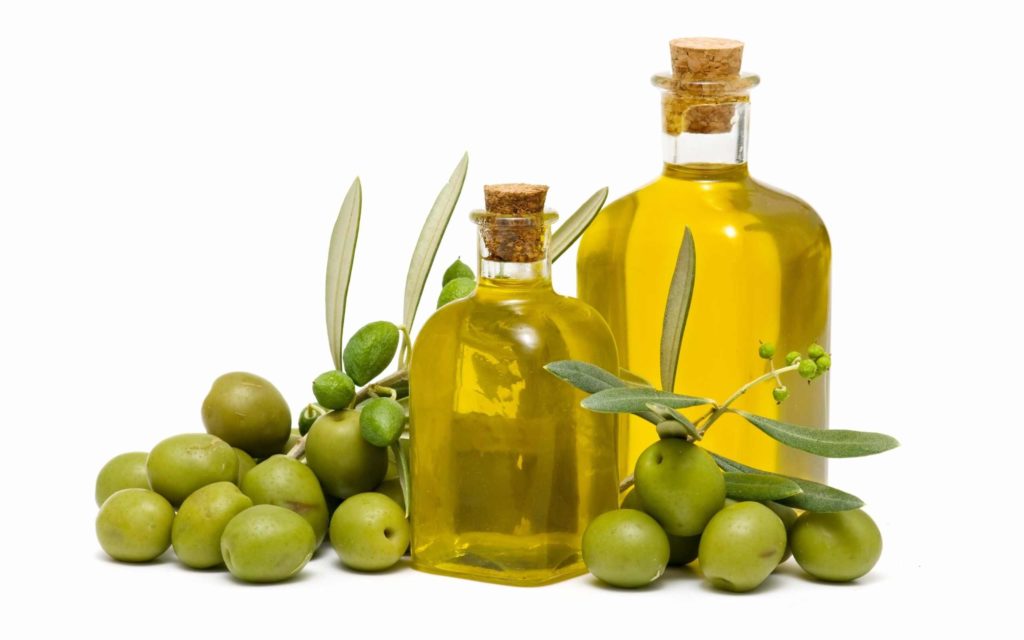
On first thought, it’s kind of a mind bender that even though extra virgin olive oil is less processed than regular olive oil, it is actually more expensive. In fact, more often than not, EVOO tends to be the most expensive oil in the baking aisle!
This is because without the aid of heat, it takes quite some time to extract oil from olives during cold pressing. In addition, the yield from cold pressing is less, and the resulting oil must be evaluated to meet certain standards.
While it’s true that regular olive oil requires more steps in processing and refining, the overall ratio of yield to effort outweighs this. This fact combined with the reality that it is a lower quality oil leads regular olive oil to be much more affordable.
Nutrition
It’s no secret that olive oil is one of the healthiest oils you can pull from the supermarket shelf! No longer is fat the enemy it used to be, so long as the fats that make up the majority of your diet happen to be healthy fats. Thankfully, such is the case when it comes to olive oil. Packed with oleic acid, a mono-unsaturated omega-9 fatty acid (say that 3 times fast!), olive oil is full of the good stuff that balances blood pressure and cholesterol levels in your bloodstream.
While both olive oil and extra virgin olive oil contain these same healthy fats, there are some other nutritional differences due to the processing. As good quality EVOO is the least processed, it maintains more of its natural flavor characteristics, thereby retaining the most health benefits as well. Refining olive oil strips it of many components including vitamins and those important compounds known as polyphenols, which act as antioxidants throughout the body.
Olive Oil vs. Extra Virgin Olive Oil: The Bottom Line
It goes without saying, the world of cooking oils is a vast one! With so many different types of oils out there, we hope the information contained in this article has helped your shopping to go easier and make your cooking oil selections more straightforward.
Just remembered, when it comes to extra virgin olive oil vs. regular olive oil, extra virgin is the least processed of the two and is a cold pressed oil, while regular olive oil is more heavily refined and is extracted with heat. This means that EVOO has a darker appearance, more substantial taste, lower smoke point, and higher price tag. Regular olive oil on the other hand, is lighter and more neutral in color and flavor, can withstand high heat, and generally more affordable.
Need a delicious recipe to try out that new bottle of oil you just purchased as a result of your newfound informed-ness? Check out our: Mouthwatering Minestrone Soup, Cardamom Spiced Butternut Squash Gratin, or Spaghetti Squash ‘Pasta’ with Olives, Feta, Tomato & Basil!
